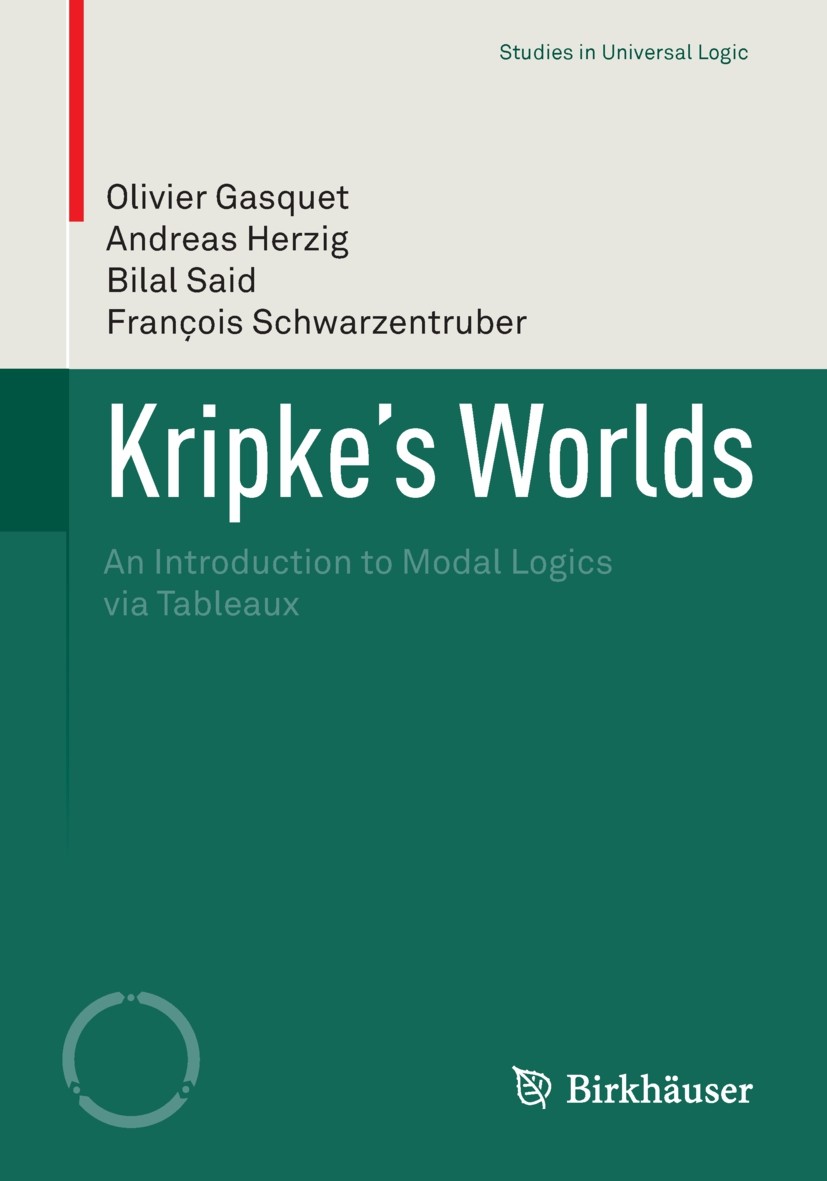| 書目名稱 | Kripke’s Worlds | | 副標(biāo)題 | An Introduction to M | | 編輯 | Olivier Gasquet,Andreas Herzig,Fran?ois Schwarzent | | 視頻video | http://file.papertrans.cn/541/540577/540577.mp4 | | 概述 | Aims at filling the gap between existing introductory and advanced textbooks.Introduces to the most important modal logics with multiple modalities from the perspective of the associated reasoning tas | | 叢書名稱 | Studies in Universal Logic | | 圖書封面 |  | | 描述 | .Possible worlds models were introduced by Saul Kripke in the early 1960s. Basically, a possible world‘s model is nothing but a graph with labelled nodes and labelled edges. Such graphs provide semantics for various modal logics (alethic, temporal, epistemic and doxastic, dynamic, deontic, description logics) and also turned out useful for other nonclassical logics (intuitionistic, conditional, several paraconsistent and relevant logics). All these logics have been studied intensively in philosophical and mathematical logic and in computer science, and have been applied increasingly in domains such as program semantics, artificial intelligence, and more recently in the semantic web. Additionally, all these logics were also studied proof theoretically. The proof systems for modal logics come in various styles: Hilbert style, natural deduction, sequents, and resolution. However, it is fair to say that the most uniform and most successful such systems are tableaux systems. Given?logic and a formula, they allow one to check whether there is a model in that logic. This basically amounts to trying to build a model for the formula by building a tree. .This book follows a more general appr | | 出版日期 | Book 2014 | | 關(guān)鍵詞 | epistemic logics; modal logics; tableau method; temporal logics | | 版次 | 1 | | doi | https://doi.org/10.1007/978-3-7643-8504-0 | | isbn_softcover | 978-3-7643-8503-3 | | isbn_ebook | 978-3-7643-8504-0Series ISSN 2297-0282 Series E-ISSN 2297-0290 | | issn_series | 2297-0282 | | copyright | Springer Basel AG 2014 |
The information of publication is updating

|
|
 |Archiver|手機版|小黑屋|
派博傳思國際
( 京公網(wǎng)安備110108008328)
GMT+8, 2025-10-10 20:35
|Archiver|手機版|小黑屋|
派博傳思國際
( 京公網(wǎng)安備110108008328)
GMT+8, 2025-10-10 20:35


